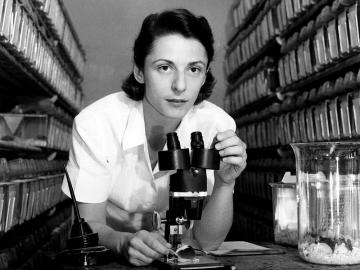
Filter News
Area of Research
- Advanced Manufacturing (5)
- Biology and Environment (10)
- Building Technologies (3)
- Clean Energy (34)
- Climate and Environmental Systems (1)
- Computational Biology (1)
- Computational Engineering (1)
- Computer Science (6)
- Fusion and Fission (1)
- Fusion Energy (4)
- Isotopes (2)
- Materials (24)
- Materials for Computing (1)
- National Security (2)
- Neutron Science (12)
- Nuclear Science and Technology (7)
- Quantum information Science (2)
- Renewable Energy (1)
- Supercomputing (9)
- Transportation Systems (1)
News Type
Date
News Topics
- 3-D Printing/Advanced Manufacturing (10)
- Advanced Reactors (6)
- Artificial Intelligence (8)
- Big Data (8)
- Bioenergy (4)
- Biology (5)
- Biomedical (3)
- Buildings (8)
- Chemical Sciences (2)
- Clean Water (5)
- Climate Change (3)
- Composites (3)
- Computer Science (19)
- Coronavirus (4)
- Critical Materials (3)
- Cybersecurity (1)
- Decarbonization (1)
- Energy Storage (10)
- Environment (11)
- Exascale Computing (1)
- Fusion (3)
- Grid (7)
- High-Performance Computing (4)
- Hydropower (5)
- Irradiation (1)
- Isotopes (1)
- Machine Learning (5)
- Materials (11)
- Materials Science (12)
- Microscopy (5)
- Molten Salt (1)
- Nanotechnology (4)
- National Security (3)
- Neutron Science (10)
- Nuclear Energy (9)
- Partnerships (1)
- Physics (3)
- Polymers (2)
- Quantum Science (5)
- Simulation (2)
- Space Exploration (6)
- Summit (3)
- Sustainable Energy (8)
- Transportation (9)
Media Contacts

Oak Ridge National Laboratory researchers have retrofitted a commercial refrigeration container designed to ensure COVID-19 vaccines remain at ultra-low temperatures during long transport and while locally stored.

A research team from Oak Ridge National Laboratory has identified and improved the usability of data that can help accelerate innovation for the growing bioeconomy.

To advance sensor technologies, Oak Ridge National Laboratory researchers studied piezoelectric materials, which convert mechanical stress into electrical energy, to see how they could handle bombardment with energetic neutrons.

Researchers at Oak Ridge National Laboratory demonstrated that an additively manufactured polymer layer, when applied to carbon fiber reinforced plastic, or CFRP, can serve as an effective protector against aircraft lightning strikes.

As scientists study approaches to best sustain a fusion reactor, a team led by Oak Ridge National Laboratory investigated injecting shattered argon pellets into a super-hot plasma, when needed, to protect the reactor’s interior wall from high-energy runaway electrons.

The life and legacy of Dr. Liane Russell – world-renowned for her groundbreaking genetics research in mice – will be celebrated during a symposium on December 20 beginning at 8:30 a.m. at Oak Ridge National Laboratory.

Researchers at ORNL and the National Renewable Energy Laboratory took inspiration from flying insects to demonstrate a miniaturized gyroscope, a special sensor used in navigation technologies.

If humankind reaches Mars this century, an Oak Ridge National Laboratory-developed experiment testing advanced materials for spacecraft may play a key role.

ORNL researchers created and tested new wireless charging designs that may double the power density, resulting in a lighter weight system compared with existing technologies.

A team of scientists found that critical interactions between microbes and peat moss break down under warming temperatures, impacting moss health and ultimately carbon stored in soil.


